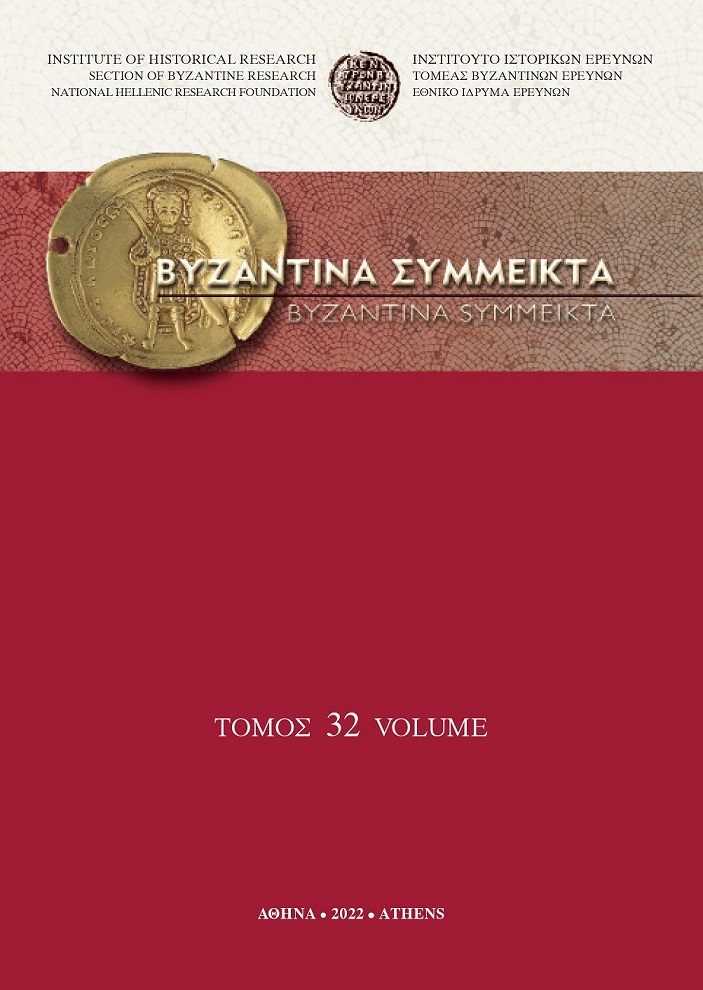Byzantine Textual Sources for Climatic and Environmental Developments

Abstract
ΒΥΖΑΝΤΙΝΕΣ ΚΕΙΜΕΝΙΚΕΣ ΠΗΓΕΣ ΣΧΕΤΙΚΑ ΜΕ ΤΙΣ ΚΛΙΜΑΤΟΛΟΓΙΚΕΣ ΚΑΙ ΤΙΣ ΠΕΡΙΒΑΛΛΟΝΤΟΛΟΓΙΚΕΣ ΑΛΛΑΓΕΣ
Το παρόν άρθρο πραγματεύεται την πρόοδο που έχει πραγματοποιηθεί στη διερεύνηση των βυζαντινών κειμενικών πηγών από ιστορική και παλαιοκλιματολογική άποψη. Αναλύει γενικές έννοιες που επηρεάζουν την ιδεολογική προοπτική των αναφορών στον καιρό, το κλίμα και τις σχετικές καταστροφές, στο πλαίσιο των ειδών των βυζαντινών κειμενικών πηγών που τις περιλαμβάνουν. Στη συνέχεια, παρουσιάζει επισκόπηση των τεκμηριωμένων παλαιοκλιματικών στοιχείων που συναντώνται για το Βυζάντιο, δίνοντας έμφαση στις κατηγορίες των φαινομένων που αναφέρονται στις πηγές. Τέλος, συζητά προβλήματα που σχετίζονται με την ανάλυση και την ερμηνεία των στοιχείων με όρους ιστορικής κλιματολογίας του Βυζαντίου και, τελικά, βυζαντινής περιβαλλοντικής ιστορίας.
Article Details
- How to Cite
-
TELELIS, I. (2022). Byzantine Textual Sources for Climatic and Environmental Developments. Byzantina Symmeikta, 32, 17–41. https://doi.org/10.12681/byzsym.27282
- Issue
- ΒΥΖΑΝΤΙΝΑ SΥΜΜΕΙΚΤΑ 32
- Section
- Articles

This work is licensed under a Creative Commons Attribution-NonCommercial-ShareAlike 4.0 International License.
Copyright: The copyright for articles in this journal is retained by the author(s), with first publication rights granted to the journal. By virtue of their appearance in this open access journal, articles are free to use (with the exception of the non-granted right to make derivative works) with proper attribution for non-commercial uses (licence Creative Commons 4.0). NHRF retains the worldwide right to reproduce, display, distribute, and use articles published in BYZANTINA SYMMEIKTA in all formats and media, either separately or as part of collective works for the full term of copyright. This includes but is not limited to the right to publish articles in an issue of the Journal, copy and distribute individual reprints of the articles, authorize reproduction of articles in their entirety in another NHRF publication, and authorize reproduction and distribution of articles or abstracts thereof by means of computerized retrieval systems.



